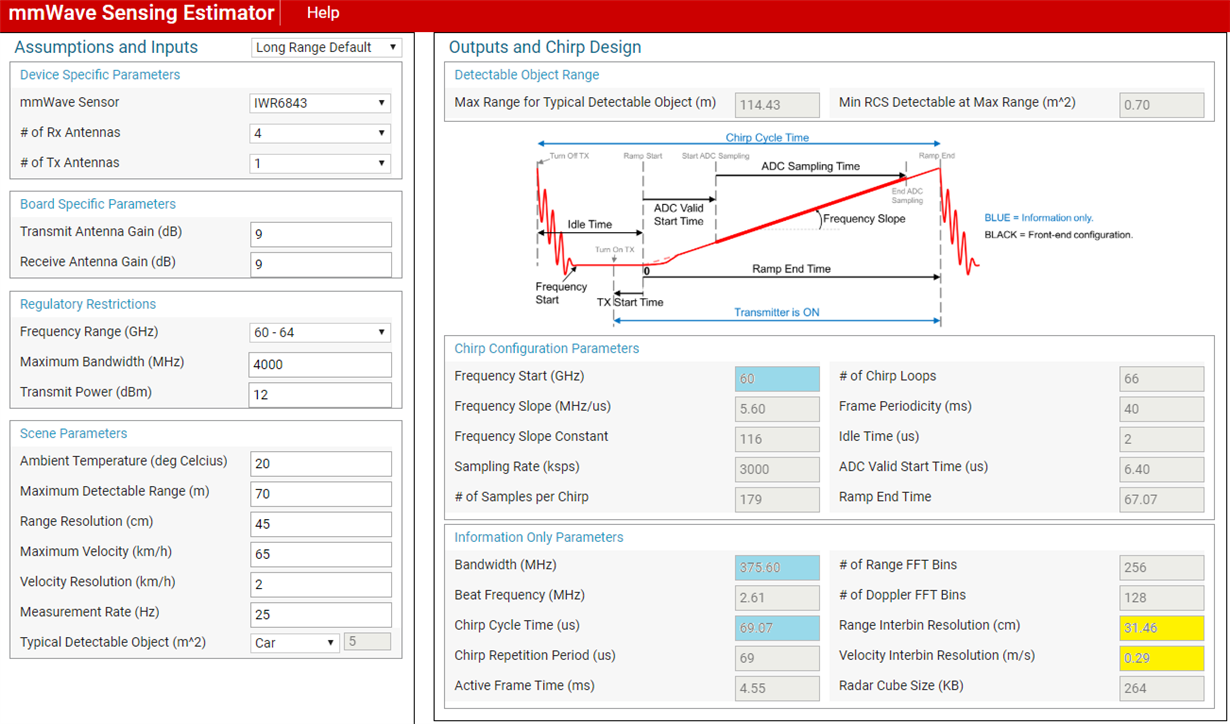I do not understand how the TI mmWave Sensing Estimator calculates range interbin resolution and velocity interbin resolution.
If I manually calculate distance resolution via d = c / 2B I get a different result from the tool. Likewise, calculating velocity resolution via v = lambda / 2T also results in a different value.
c = 3x10^8 [m/s]
B = 375.60[MHz]
d = c / 2B = 3x10^8 / (2 * 375.60x10^6) = 399.4x10^-3[m] or 39.94[cm] which does not match the above highlighted value.
Velocity Resolution
lambda = c / f = 3x10^8 / 60x10^9 = 5x10^-3[m] or 5[mm]
T = 66 * 69.07x10-6 = 4.55x10^-3[s] or 4.55[ms]
v = lambda / 2F = 5x10^-3 / (2 * 4.55x10^-3) = 548.4x10^-3[m/s] or 0.548[m/s]
Where do these differences come from? Am I misunderstanding the above parameters?
Cheers,
Curtis Belknap



